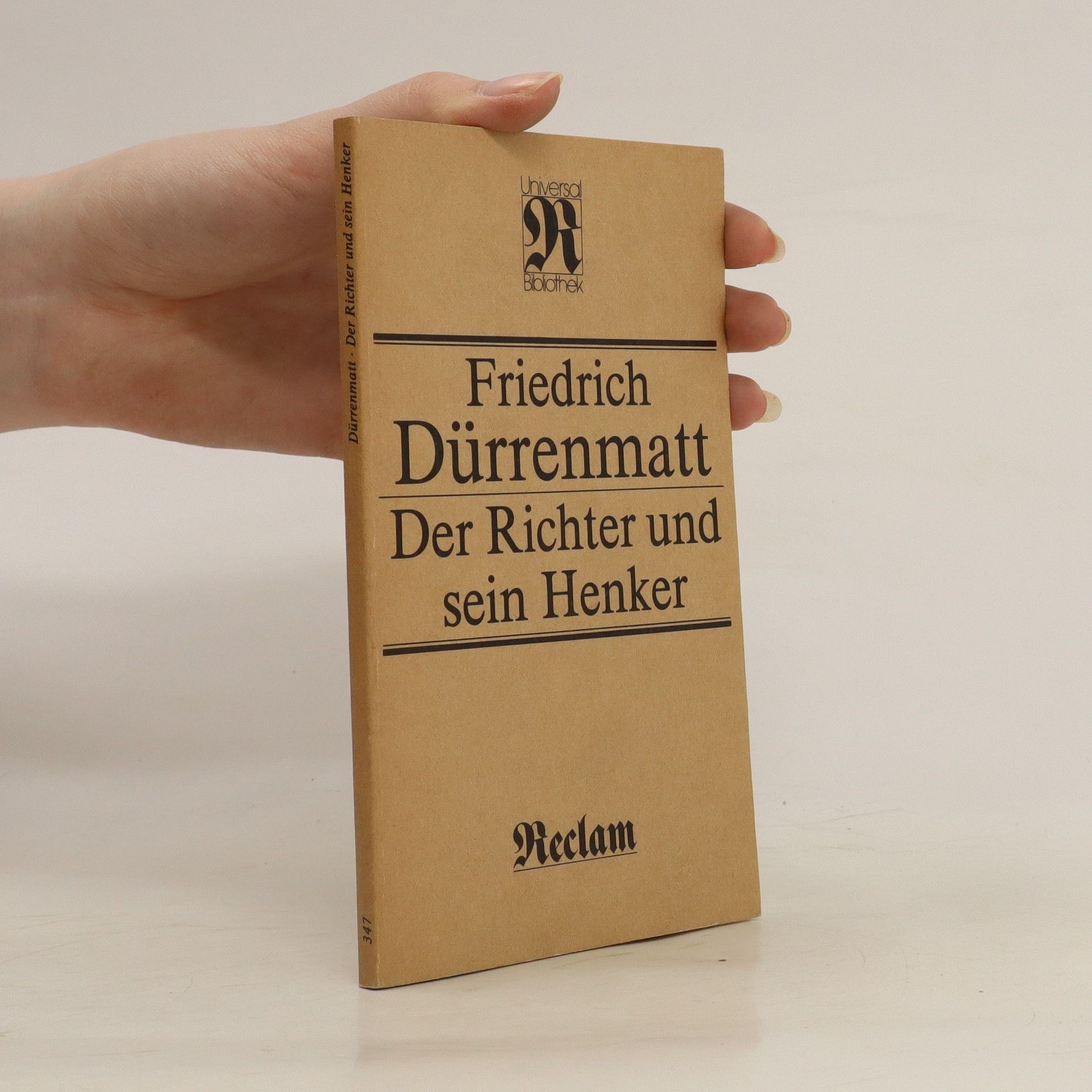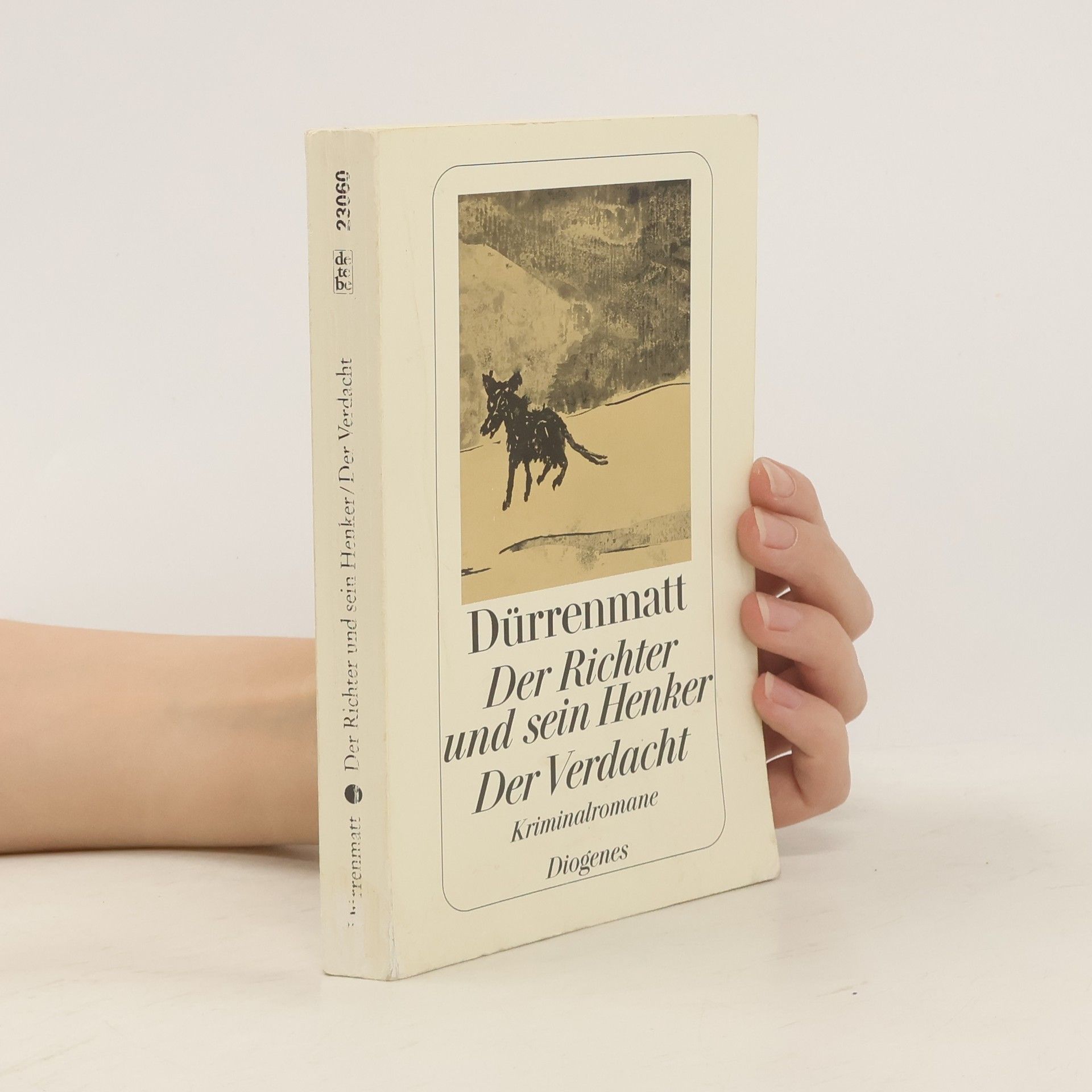'Der Richter und sein Henker' ist einer seiner berühmtesten Romane - die Geschichte eines Mordes. Mit den reißerischen Mitteln einer Detektivstory erzählt er die Aufklärung einer Gewalttat an einem Polizeileutnant, den letzten Fall des totkranken Komissars Bärlach - die Geschichte einer hintergründigen Pointe.
Les mystères de l'inspecteur BärlachSéries
Cette série de romans policiers plonge les lecteurs dans un monde de crimes complexes et d'énigmes morales. Suivez le brillant mais affaibli Inspecteur Bärlach alors qu'il navigue entre sombres secrets et auteurs rusés. Ses méthodes sont peu conventionnelles, toujours motivées par la quête de justice, même au prix de sacrifices personnels. Plongez dans des récits captivants qui explorent les frontières de la loi et de la nature humaine.




Ordre de lecture recommandé
- 1
Der Richter und sein Henker. Der Verdacht
- 270pages
- 10 heures de lecture
'Der Richter und sein Henker': Inspektor Bärlach ist todkrank, und es bleibt ihm nicht viel Zeit, den Verbrecher Gastmann zu überführen. Da bietet ihm ein Mord (den nicht Gastmann begangen hat) eine Möglichkeit...§'Der Verdacht': Inspektor Bärlach liegt im Krankenhaus und sieht in einer Illustrierten das Bild des berüchtigten KZ-Arztes Nehle. Bärlach hat den Verdacht, daß Nehle mit dem Vorsteher einer Zürcher Privatklinik identisch sei...§'
This volume offers bracing new translations of two precursors to the modern detective novel by Friedrich Dürrenmatt, whose genre-bending mysteries recall the work of Alain Robbe-Grillet and anticipate the postmodern fictions of Paul Auster and other contemporary neo-noir novelists. Both mysteries follow Inspector Barlach as he moves through worlds in which the distinction between crime and justice seems to have vanished. In The Judge and His Hangman , Barlach forgoes the arrest of a murderer in order to manipulate him into killing another, more elusive criminal. And in Suspicion , Barlach pursues a former Nazi doctor by checking into his clinic with the hope of forcing him to reveal himself. The result is two thrillers that bring existential philosophy and the detective genre into dazzling convergence.
Dvě na sebe volně navazující prózy, které se setkávají v jednom svazku, Soudce a jeho kat (1951) a Podezření (1958), nesou sice charakter kriminálních románů, v jistém smyslu však meze tradiční detektivky překračují – a v tom tkví jejich jedinečnost i umělecká hodnota. Autor navazující na klasiky žánru, jakými byli například Rex Stout, Raymond Chandler či Georges Simenon, totiž ví, že jádrem dobré kriminální zápletky není pouze honička za pachatelem či rozluštění záhady, ale především psychologická kresba zla v obecnější rovině. Takové vyprávění však nesmí čtenáře nudit, a tak je Dürrenmatt koření svým typickým, řeklo by se možná až zlomyslným humorem. Odstup, s jakým autor ke svému dílu přistupuje, se ostatně zračí i v jeho prohlášení, že román Soudce a jeho kat napsal především kvůli penězům…